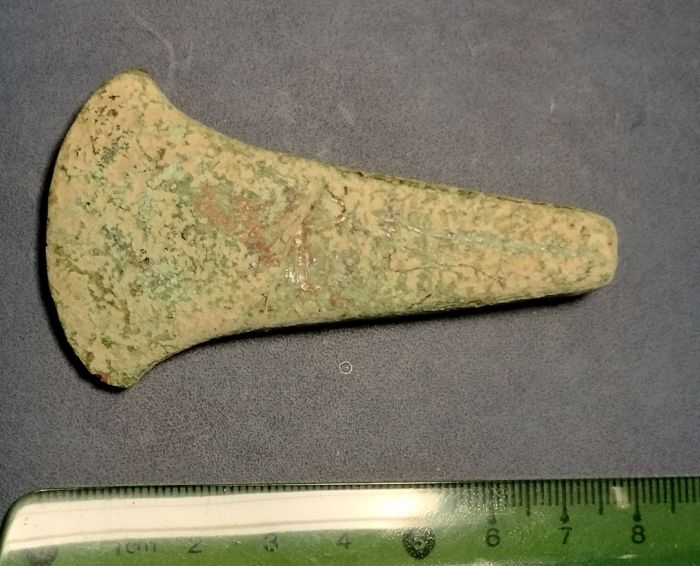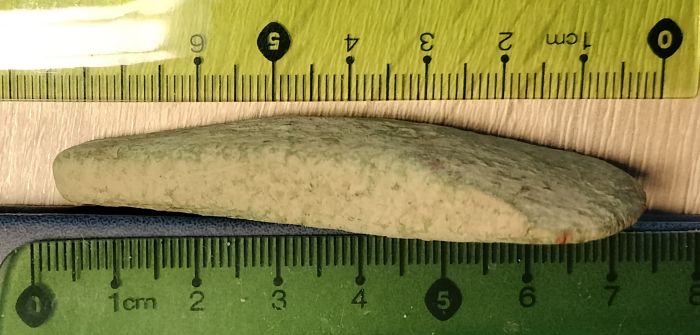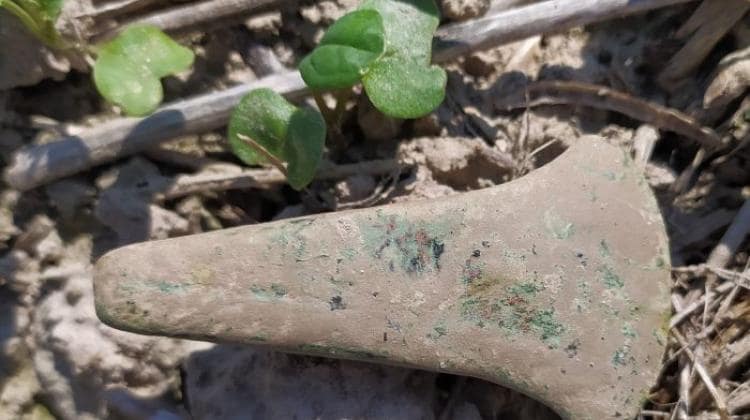A copper ax found from the 4th to 3rd millennium BC identified with the Tripelia culture was found in the municipality of Horodło in the Hrubieszów District.
The ax discovered in the Hrubieszów area, identified with the Trybelia culture, is probably the oldest discovery of a copper product in Poland as reported by the Prefect of Antiquities of Lublin District.
The Prefect of Antiquities of Lublin Province described the antiquity as being 7.4 cm long, with a broad, fan-shaped blade 4.1 cm wide, and a rectangular convex tip measuring 0.9 cm x 0.6 cm.
The Cucuteni-Tripilia culture was one of the most important cultures in southeastern Europe. It arose as a result of interactions between different Neolithic groups in the Carpathians and the Balkans during the second half of the sixth millennium BC.
The fact that the ax appeared in eastern Poland is surprising because the territorial scope of the Tripoli culture covered the regions of today's Bulgaria, Romania, Moldova and western Ukraine.

Analyzing the find in terms of its chronological and cultural affiliation, the archaeologist from the Zamoš delegation of the Prefectural Office for the Protection of Historical Monuments, Wieslaw Koman, asked for help from Professor Elbieta Klosinska of the Institute of Archeology at Maria Curie-Skodowska University in Lublin. The specialist ruled out that the ax on display belonged to Bronze Age cultures, as the artifact in no way corresponded to the already well-known and recognized types of axes from that period.
In addition, our ax was made by a very simple “primitive” casting method, in a flat convex shape, and was no longer used in the advanced metallurgy of the Bronze Age. Therefore, it was necessary to pay attention to the earlier Neolithic. “Unfortunately, there is no such equivalent in the inventories of Neolithic cultures from Poland.”
The mystery was solved by turning to archaeological finds from within Ukraine. “Vyslav Koman found a find publication identical to a copper ax discovered in the village of Shcherbanivka in the Kiev region, where accompanying fragments of vascular pottery made it possible to attribute it to the Tripelia culture and date it to the late period of development of this culture, estimated in the 4th to 3rd millennium BC,” – Al-Hafiz reported.

“It is true that we recorded finds of Tryplian culture pottery from Gródek, Hrubieszów municipality, and the presence of this ax in nearby Matcz can be considered as confirmation of the settlement of people of this culture also in eastern Poland,” says the Lublin conservator.
The ax will soon be transferred to the collection of the Hrubieszów Museum, where it will undergo further research, according to the conservator.
Cover photo: Governor of Antiquities of Lublin Province
PAP

